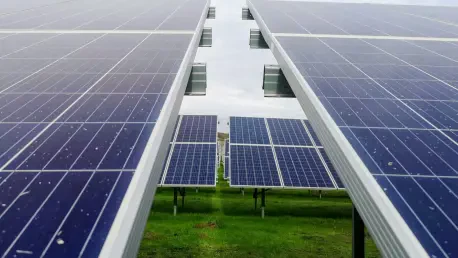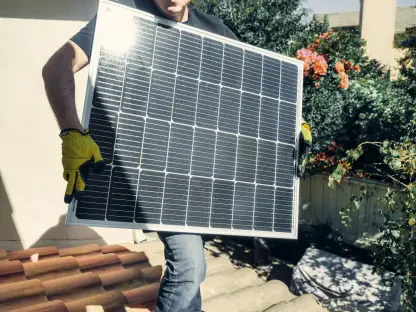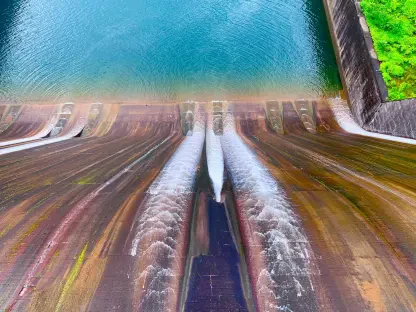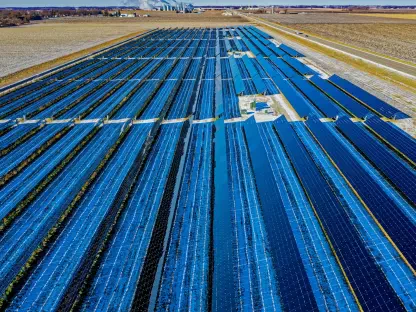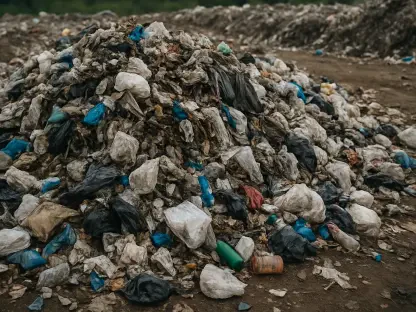The shifting landscape of energy generation in the United States has come under scrutiny following recent policy changes by President Donald Trump. These changes have created new challenges for the clean energy sector, prompting utilities and policymakers to consider the viability of Distributed Energy Resources (DERs) and Virtual Power Plants (VPPs) as potential solutions. This article delves into the implications of these policies and explores whether decentralized energy resources can offer a pragmatic way forward.
Policy Changes and Their Impact on Clean Energy
Adverse Impacts of Trump’s Policies
The Trump administration’s imposition of sweeping tariffs on imports of solar panels, batteries, and electrical components has severely strained the clean energy supply chain. These tariffs have made it increasingly difficult for utility-scale renewable energy projects to maintain their pace and feasibility. The clean energy sector, which has been growing steadily over recent years, now faces significant impediments due to these policy shifts.
The tariffs have not only increased the costs of essential components but also disrupted established supply chains. Manufacturers and developers have encountered delays and price hikes, thereby impacting project timelines and budgets. This strain on the supply chain is particularly problematic for large-scale renewable projects that rely heavily on steady and predictable access to these components. As a result, the clean energy industry must navigate these new obstacles while striving to meet its long-term objectives.
Federal Actions and Their Consequences
In addition to tariffs, Trump’s executive orders aimed at halting federal wind permits and retracting offshore wind leases have further complicated the sector. By declaring an “energy emergency” that prioritizes higher capacity-factor generating resources such as coal and natural gas plants over renewable options like wind and solar, the administration has compounded the challenges faced by the clean energy industry.
These actions have introduced a great deal of uncertainty regarding the future of various renewable energy initiatives. The initial executive orders effectively stalled many projects, leading to delays and increased risk for investors. The prioritization of fossil fuels over renewables has also had economic ramifications, as the industry struggles to reconcile short-term policy changes with longer-term sustainability goals. Moreover, the potential repeal of tax credits under the Inflation Reduction Act has posed additional threats to wind and solar deployments, which are essential for meeting projected growth in electricity demand over the next two years.
Strategic Responses from Utilities
Embracing DERs and VPPs
In response to the challenges posed by federal policies, utilities and policymakers are increasingly looking towards Distributed Energy Resources (DERs) and Virtual Power Plants (VPPs) as viable alternatives. DERs, such as residential solar arrays, behind-the-meter installations, and electric vehicles, can be aggregated into VPPs, providing scalable and flexible solutions that mimic the supply and demand management capabilities of traditional utility-scale projects.
These decentralized resources offer significant advantages, including quicker deployment times and the ability to adapt to varying grid conditions. Utilities can benefit from the modular nature of DERs, which allows for incremental expansion in response to changing needs and constraints. In contrast to large-scale projects that require extensive planning and construction phases, DERs can be brought online swiftly, thus addressing immediate energy demands. Sean Gallagher from the Solar Energy Industries Association underscores the growing recognition of these benefits, highlighting how distributed solar and storage can be integrated far more rapidly than conventional projects.
Advantages of Decentralized Solutions
DERs and VPPs provide a host of benefits that make them attractive options amid the current supply chain disruptions and policy uncertainties. These resources help sidestep bulk grid constraints, ensuring continued reliability and resilience for the energy infrastructure. The flexibility inherent in DERs enables them to effectively respond to evolving market conditions and grid requirements, thus reducing the dependency on centralized generation sources.
Additionally, DERs and VPPs enhance grid reliability by spreading generation across numerous smaller units, thereby mitigating the risks associated with single points of failure. This decentralized approach is especially valuable in regions prone to infrastructure or weather-related disruptions. By leveraging diverse resources, VPPs can offer dynamic responses to both supply and demand fluctuations, maintaining stability and efficiency. John Ketchum, CEO of NextEra, points out the unsustainable reliance on fossil generation due to rising costs and constraints on production capacity, further emphasizing the merit of decentralized supportive alternatives like DERs and VPPs.
Economic and Policy Challenges
Supply Chain Disruptions
Although DERs and distributed storage systems exhibit favorable characteristics, they are not completely immune to supply chain disruptions. Current tariffs and ongoing policy uncertainties continue to pose significant economic challenges, affecting the broader acceptance and implementation of these technologies. For larger projects, the impacts are magnified, as they often require extensive logistical coordination and a steady flow of materials to maintain project timelines.
Ravi Manghani from Anza Renewables shares insights on how distributed generation and storage can sometimes navigate around bulk grid constraints but remain vulnerable to the same supply chain disruptions impacting larger ventures. This vulnerability necessitates a strategic approach to sourcing components and managing inventories to ensure continuity in deployment. With careful planning and robust supplier networks, utilities can mitigate some of these risks, but broader policy changes are essential to establish a more predictable and supportive environment.
State-Level Policy Constraints
At the state level, regulatory frameworks such as California’s NEM 3.0 tariff present additional hurdles for the clean energy sector. These policies affect the growth of residential solar and storage by altering financial incentives and complicating implementation processes. The innovative structures required to align DERs and VPPs with existing regulatory environments highlight the need for flexibility and supportive measures to foster broader adoption.
Stephen Lacey from Greentech Media has emphasized the importance of creating adaptable frameworks that support these innovative solutions while addressing specific regional challenges. State policy constraints not only affect individual projects but also have wider implications for achieving national clean energy goals. The successful implementation of DERs and VPPs hinges on a supportive regulatory landscape that encourages innovation and removes barriers to entry.
Growing Recognition and Deployment Efforts
Reports and Strategic Plans
As challenges persist, there is increasing recognition among states and utilities of the strategic value of DERs and VPPs. Recent reports from the NC Clean Energy Technology Center indicate a growing momentum behind efforts to harness distributed battery capacity and deploy VPP programs. This push for DER integration underscores the adaptability and rapid deployment capabilities that these resources offer.
Utilities such as Puget Sound Energy, Portland General Electric, and National Grid are pioneering VPP initiatives, demonstrating the practical efficacy of diverse aggregations ranging from thermostats and batteries to water heaters and interruptible loads. These programs showcase how a combination of technologies can collectively enhance grid performance and reliability. The proactive steps taken by these utilities reflect a broader trend towards embracing decentralized energy solutions to counteract the current policy-induced challenges.
Leveraging Distributed Resources
The potential for DERs to bolster grid reliability and support economic growth is being increasingly acknowledged. Strategic plans from entities like SEIA and Rocky Mountain Power envision significant deployments of these resources, particularly in response to rising electricity demand and evolving market conditions. These plans recognize the unique role that decentralized resources can play in maintaining grid stability and promoting resilient infrastructure.
Utilities’ interest in DERs and VPPs is expected to continue growing, driven by ambitious load forecasts and the comprehensive integration of distributed resources. This interest is not uniform across the country but is moving towards a more widespread acceptance. Xavier Williams from Xcel Energy discusses how strategic planning and regulatory alignment are critical to leverage these resources effectively, maximizing their benefits for both utilities and consumers.
Clean Energy Groups and Policy Advocacy
Advocacy for Supportive Frameworks
Clean-energy advocacy groups are actively pushing for policies that bolster the growth and deployment of DERs and VPPs. Simplifying the implementation of VPP programs and streamlining processes for utilities and customers are key components of these efforts. By advocating for robust, supportive policy frameworks, these groups aim to remove obstacles that hinder the expansion of decentralized energy resources.
Sean Gallagher from SEIA emphasizes the importance of templatizing explanations for VPP programs, making them accessible and comprehensible for both utilities and customers. This streamlined approach is crucial for overcoming administrative and procedural barriers, thus facilitating faster adoption of DERs and VPPs. Advocacy efforts extend to lobbying for regulatory changes that encourage a flexible and adaptive energy grid.
Utility Interest and Future Prospects
While utility interest in DERs and VPPs varies geographically, the overarching trend points to growing recognition of their strategic value. Ambitious load forecasts and strategic plans from utilities like Rocky Mountain Power and Xcel Energy propose significant deployment of distributed resources to meet future energy demands effectively. Utilities are increasingly aware of the resilience and adaptability offered by these resources, making them integral to long-term energy strategies.
David Johnston from the Smart Electric Power Alliance discusses how utility interest is expected to increase as the industry continues to experience disruptions and evolves towards more decentralized solutions. These forward-looking perspectives reflect cautious optimism and a recognition of DERs and VPPs as viable pathways to maintain clean energy momentum despite present challenges.
Looking Ahead
The changing landscape of energy generation in the United States has drawn significant attention, especially in light of recent policy shifts implemented by President Donald Trump. These changes have presented new hurdles for the clean energy sector, prompting utilities and policymakers to reassess and explore the potential of Distributed Energy Resources (DERs) and Virtual Power Plants (VPPs) as viable solutions.
DERs, which include solar panels, wind turbines, and energy storage systems, are smaller power sources that can be aggregated to meet energy demands. VPPs take this a step further by using advanced software to integrate various DERs, creating a network that operates like a traditional power plant, but with greater flexibility and resilience. These decentralized energy resources could play a crucial role in the nation’s shift to sustainable energy, especially in the face of unpredictable policy changes.
This article dives into the ramifications of the current policies and evaluates whether moving towards decentralized energy models could offer a more practical and stable way forward. As the clean energy sector grapples with these challenges, the effectiveness of DERs and VPPs will be critical in determining the future of the nation’s energy strategy. By examining the current landscape, the article seeks to provide insight into how these technologies might support a more resilient and sustainable energy infrastructure moving forward.
